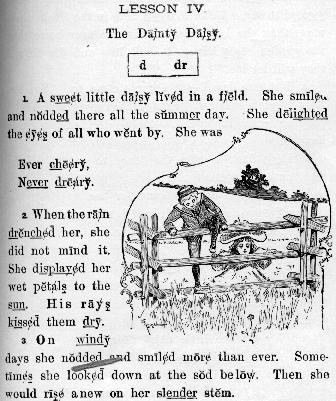The Rational Method in Reading; An Original Presentation of Sight and Sound Work that Leads Rapidly to Independent and Intelligent Reading

Ward, Edward G. The Rational Method in Reading; An Original Presentation of Sight and Sound Work that Leads Rapidly to Independent and Intelligent Reading. First Reader, Second Half-Year's Work. New York: Silver Burdett & Co., 1896 p. 73.
The use of an alphabet containing only twenty-six letters, but conveying forty-three different sounds, has been on-going problem in American reading instruction. In the nineteenth century several American educators proposed new alphabets based on an alphabet with a one-to-one letter-sound correspondence. This, they believed, would provide the only logical and scientific way to begin instruction in reading. In response, several readers were produced which experimented with new alphabets. Most of these readers were short-lived and never managed to gain the acceptance of classroom teachers or parents.
Other educators argued that reforming the alphabet would be unnecessary if diacritical marks were used within the child’s text. One such educator was Edward G. Ward who produced a popular set of readers at the turn of the century that made extensive use of these marks.
